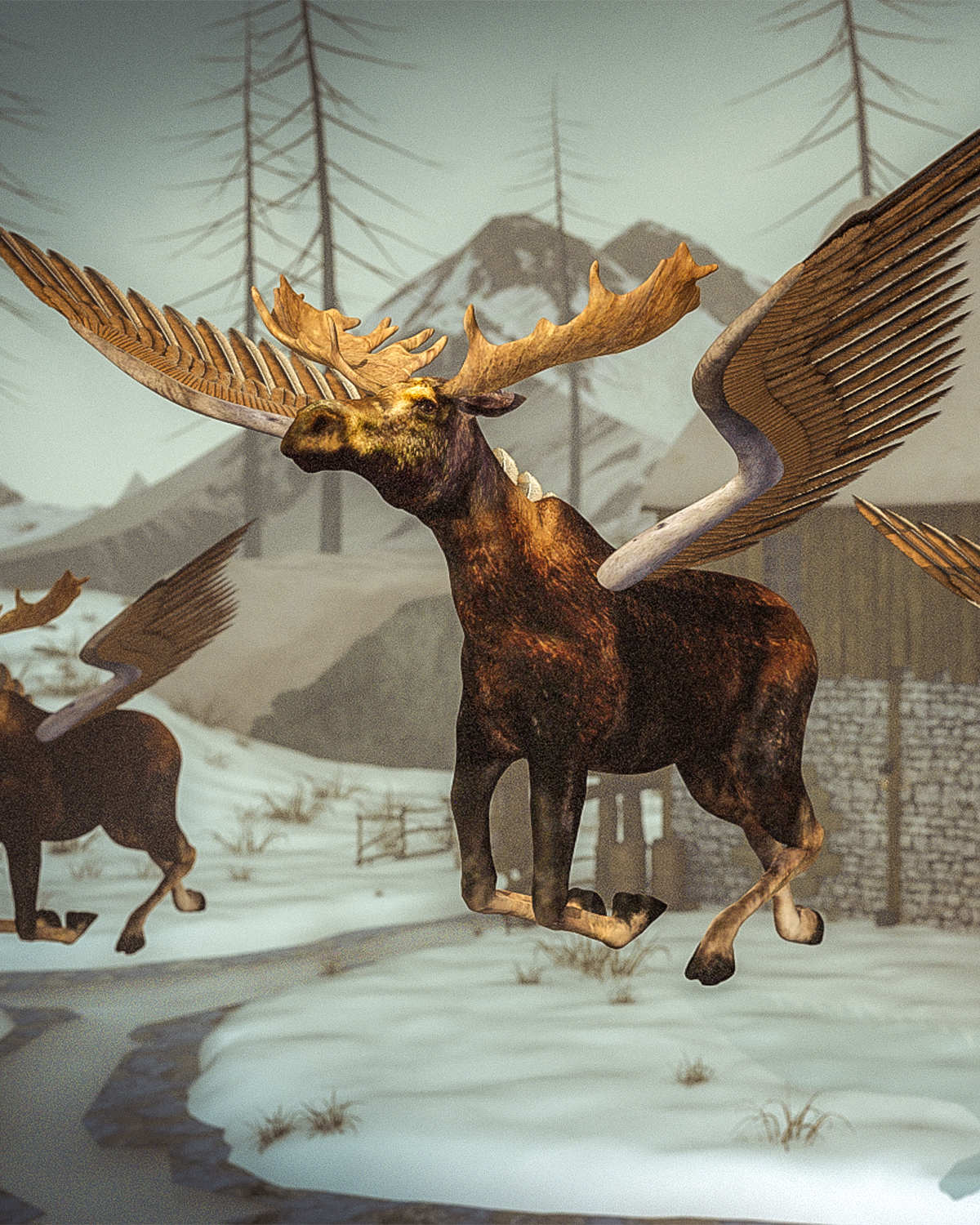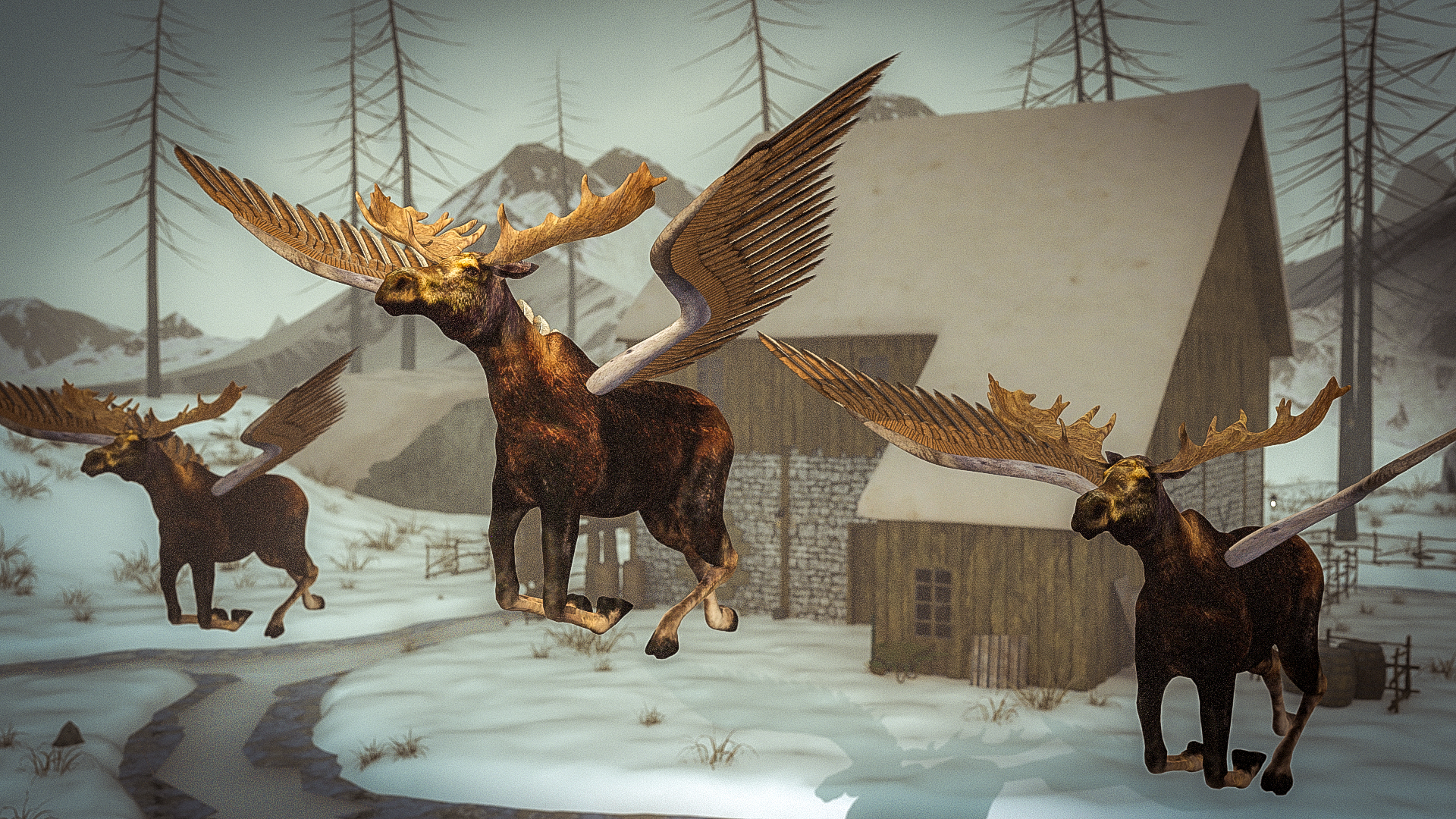Winged Moose
Winged Moose are a genetically engineered species native to the Nunyan Wastes in Eden. Best known as the trusty steeds of the yeti, winged moose closely resemble the Alces alces of Earth. In fact, it is really only the pair of enormous griffin-like wings that distinguish them from their more mundane cousins.
Collisions between winged moose and the skiff runners of the Zambowknee Transportation Network are a constant threat in the north of Eden, much to the dismay of the Icewalkers (who view the Z as emblematic of the materialism they believe is destroying the world).
Basic Information
Anatomy
The winged moose is a moose… with wings. It it has four legs, each ending in a hoof. It has a tail that is too short to shoo flies away. It has a big ol’ floppy bit of skin that hangs down from under its chin. And, if it’s a dude moose—a bull—it also has antlers.
The wings are the coolest part, of course. They allow the moose to fly and are strong enough to keep the animal aloft even when it’s being ridden by a yeti or two.
Genetics and Reproduction
Following public battles to assert their dominance, bulls seek out any and all cows that will have them. Female moose then gestate for eight months, typically delivering one calf.
Dietary Needs and Habits
Winged moose are herbivores with a strong preference for Happy Place mushrooms—a key lesson learned by the yeti, which was then exploited during the domestication process. The winged moose typically does not have access to the underground caves where Happy Place mushrooms grow, but will nose about any and all holes it finds while grazing—always hopeful it will find a colony of mushrooms which have grown too close to the surface.
Additional Information
Social Structure
The strongest bond between winged moose is between mother and calf, with calves staying close to their mothers until the next batch of young’uns are born. Other than that and during mating season, when all these loners gather to get the party started, winged moose prefer solitude over company and are rarely found in groups.
Domestication
Yeti, desiring a mount sturdy enough to support their massive frames, had already perfected the art of domesticating mundane non-winged moose. And so, the taming and training of the winged variety came fairly easily.
Once the yeti realized how heavy the objects they tethered these new flying moose to needed to be, of course.
Geographic Origin and Distribution
Winged moose are highly adapted to the cold but not so great with the heat. As such, they keep themselves mainly to the frigid climes of the Nunyan Wastes and are rarely seen south of that region. The same qualities which serve them well up north—thick skin and a dense coat—would be insufferable in most other parts of the postapocalyptic paradise they call home.

Females: 441 to 1,080 lb






Kelly Pawlik at Kobold Press loved this entry for WorldEmber! <3 She asked me to pass on her feedback to you! 1.The image of a pair of yetis aloft on a winged moose is something my mind won’t let go of. Fantastic! 2.This is a simple concept that is really well executed. I can see winged moose being logical fauna in plenty of different fantasy worlds.
Aw, thanks! This just made my day.